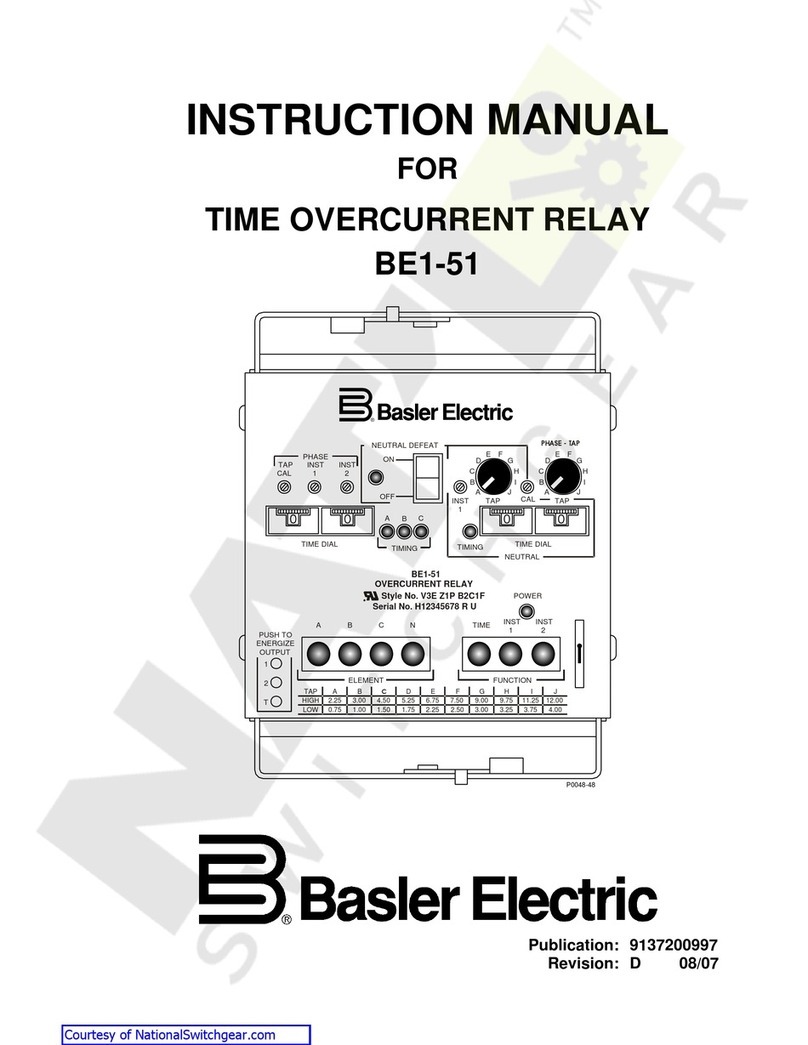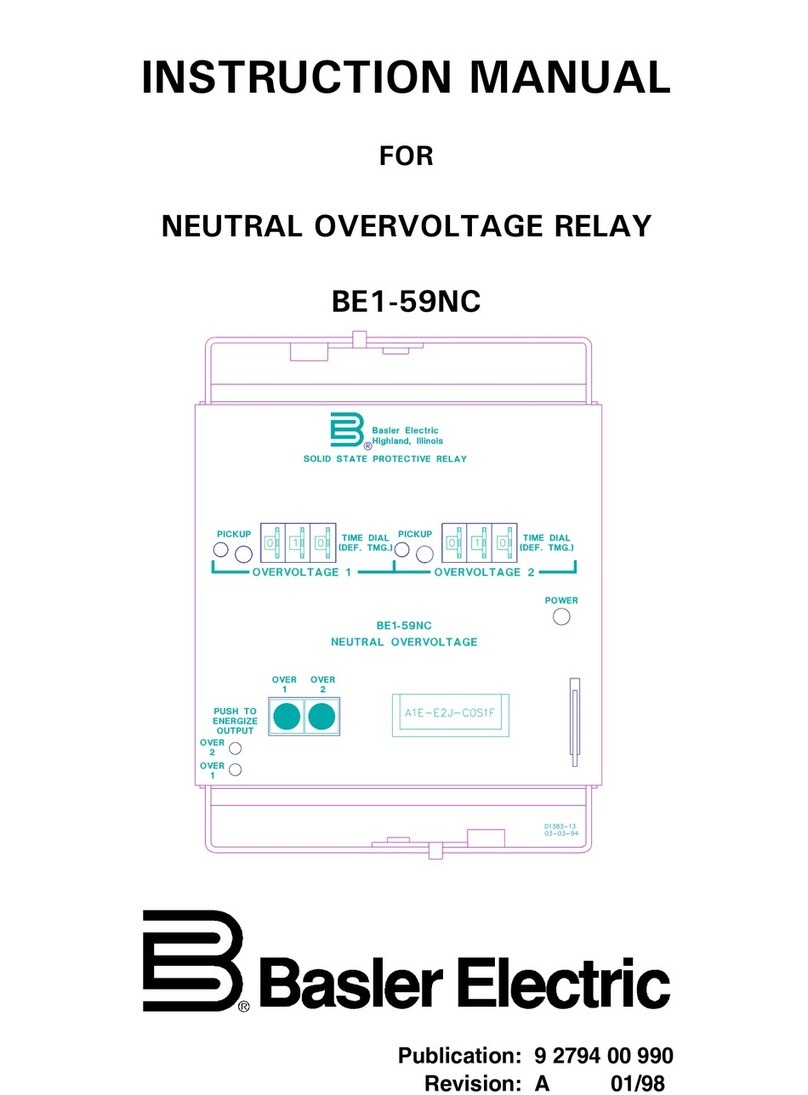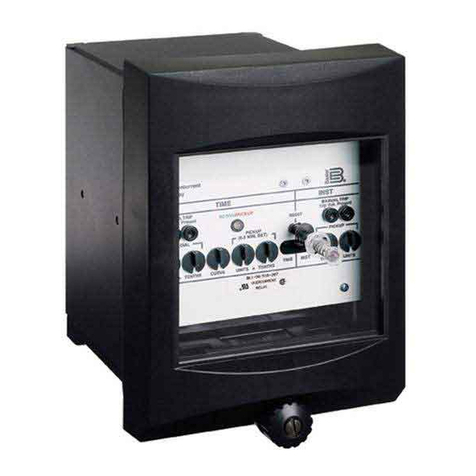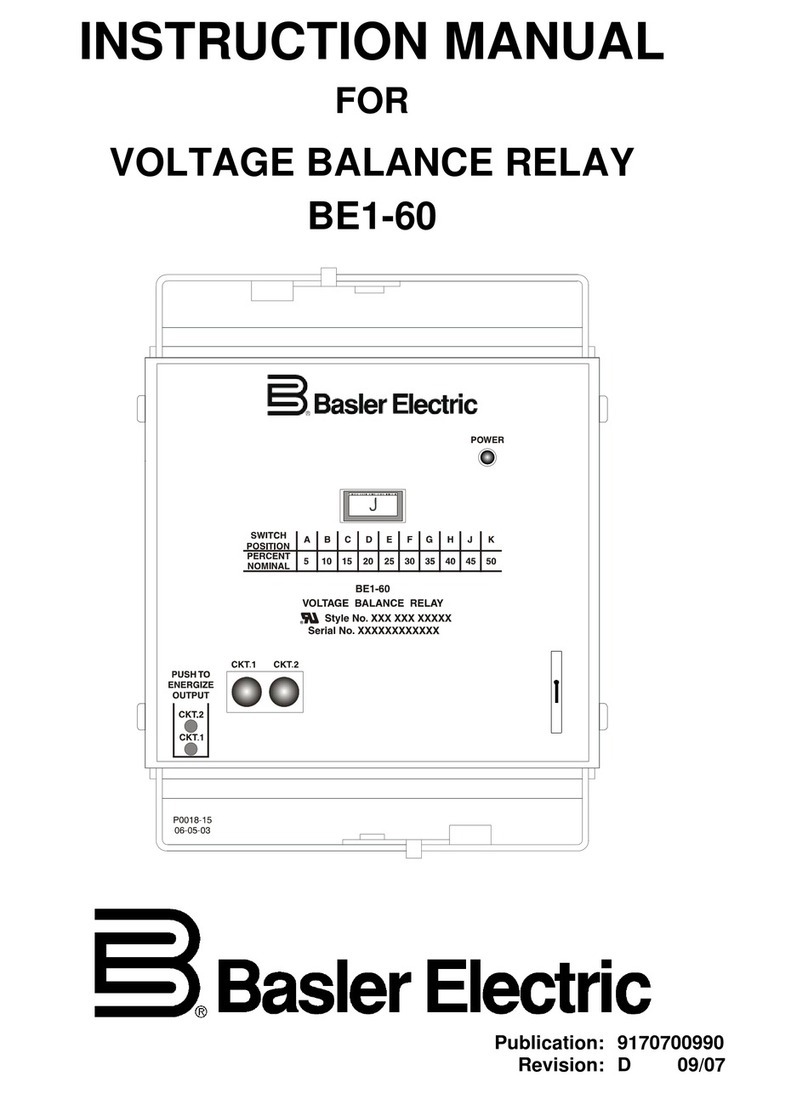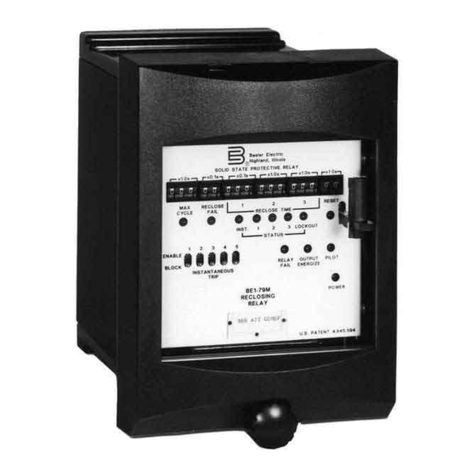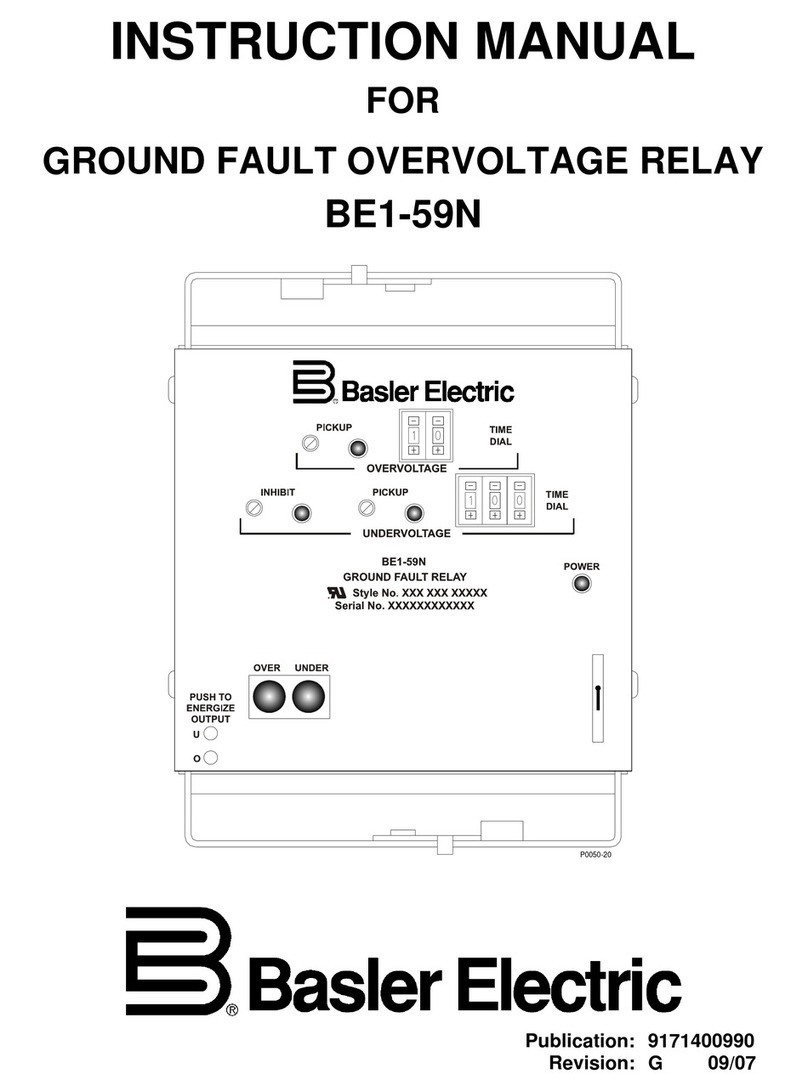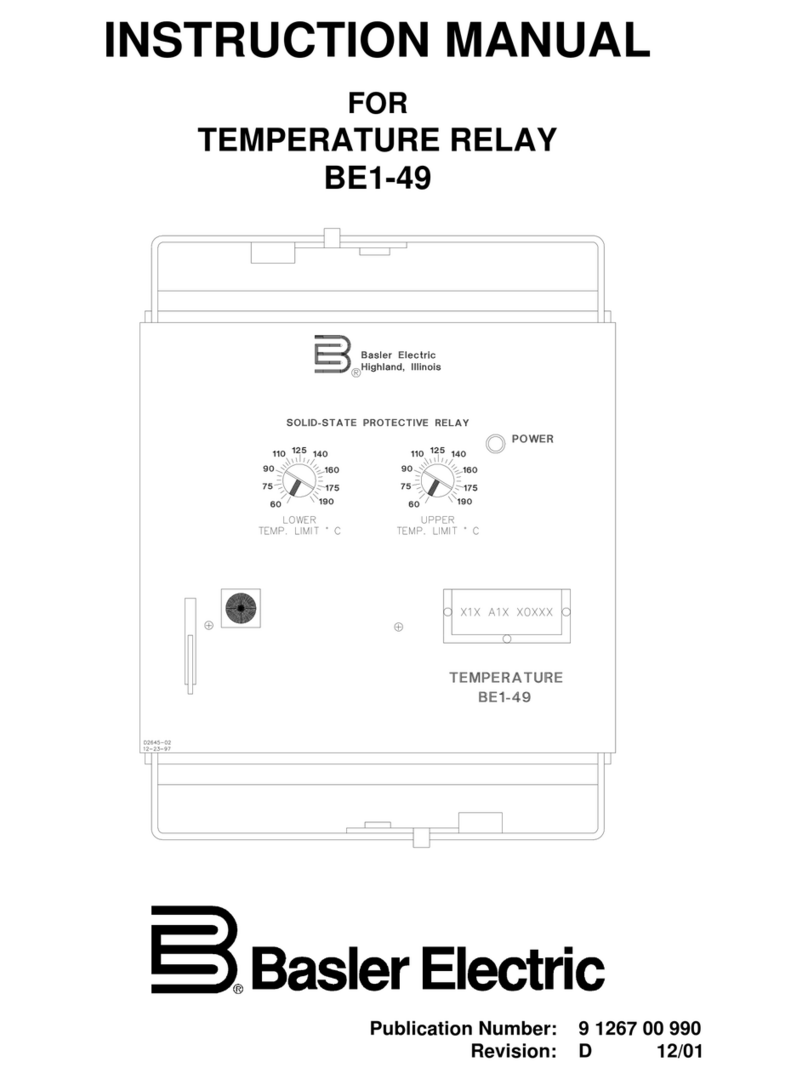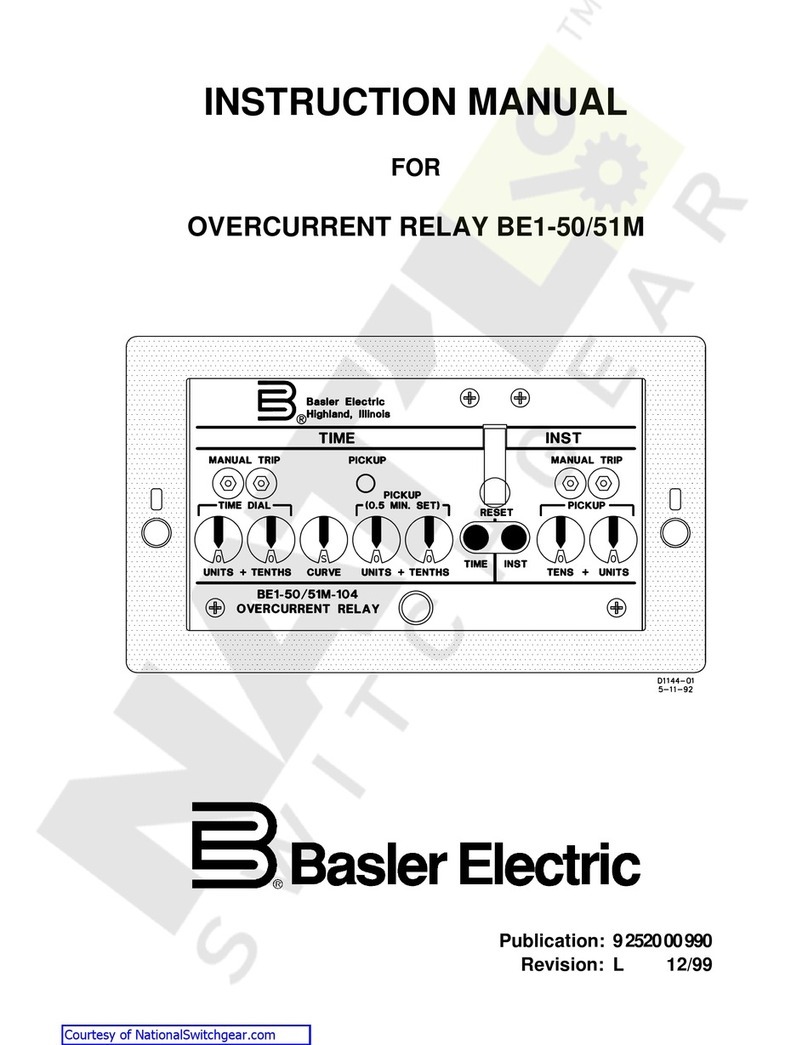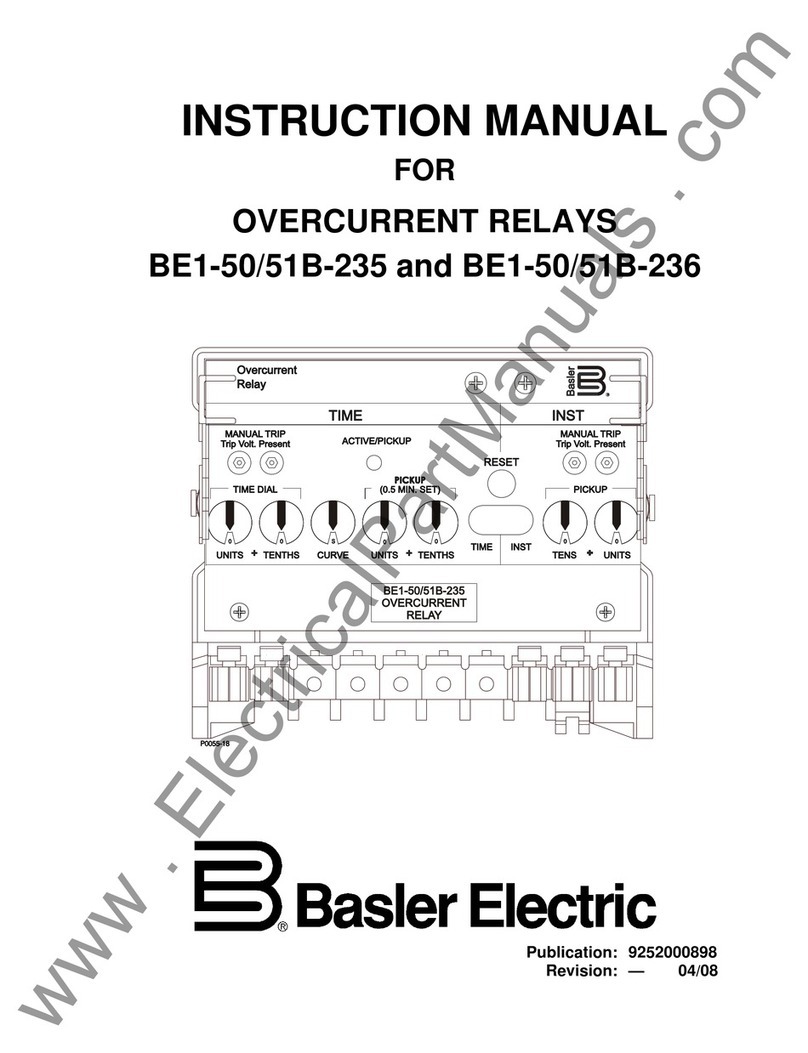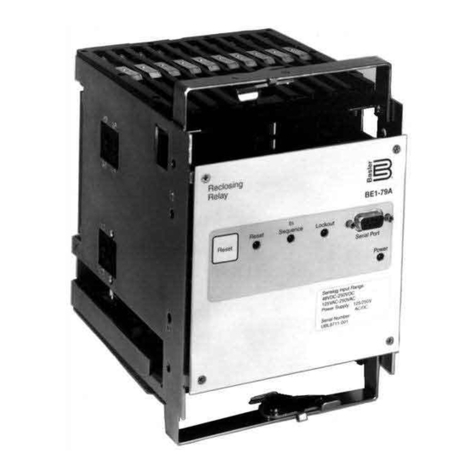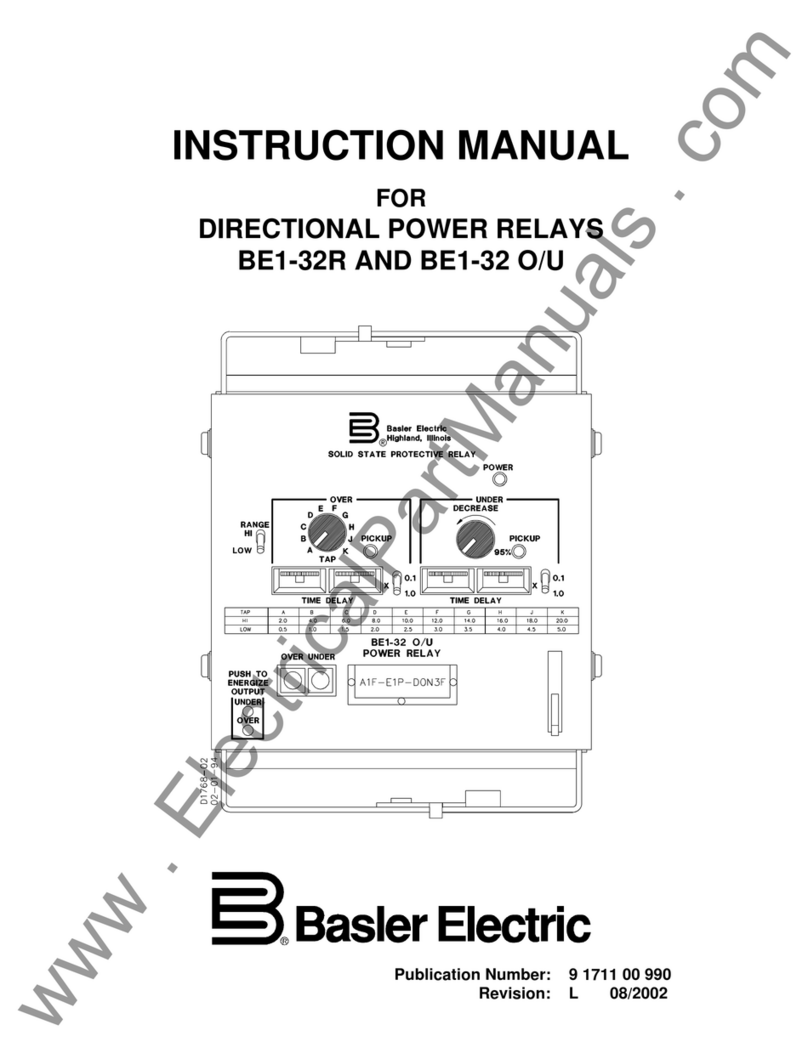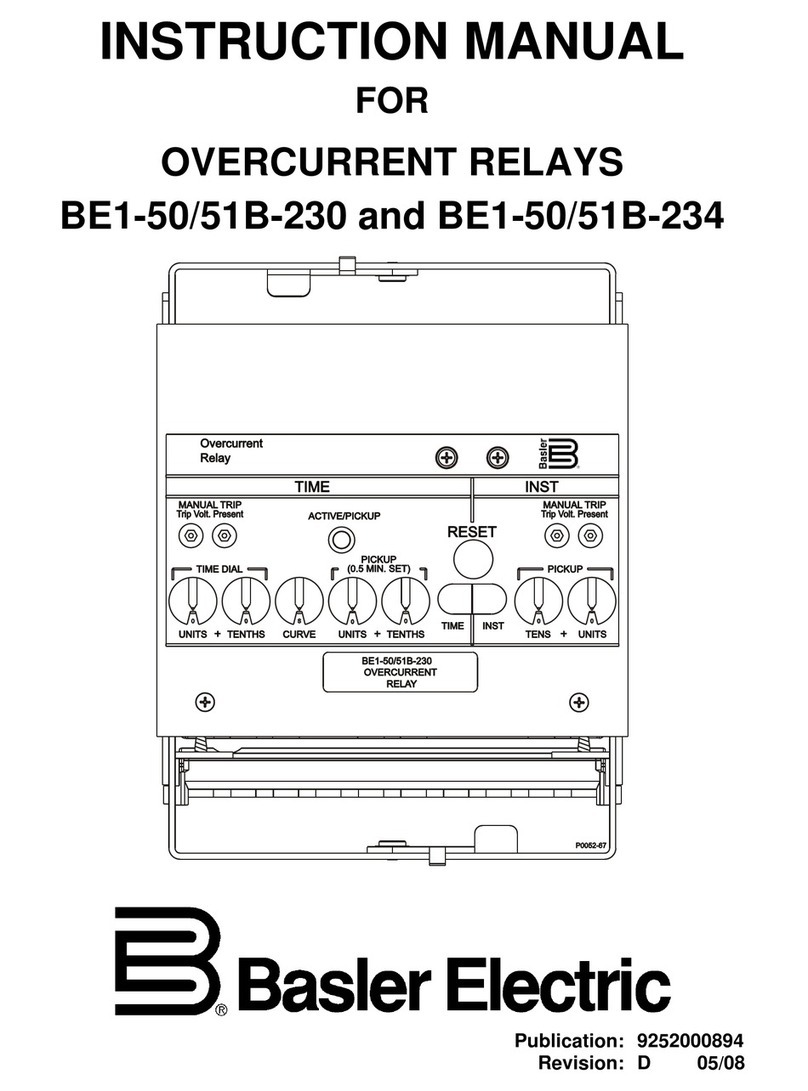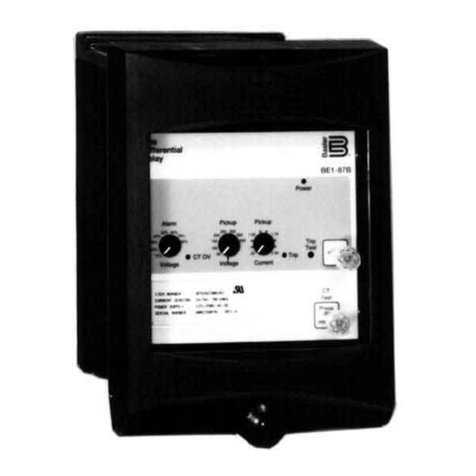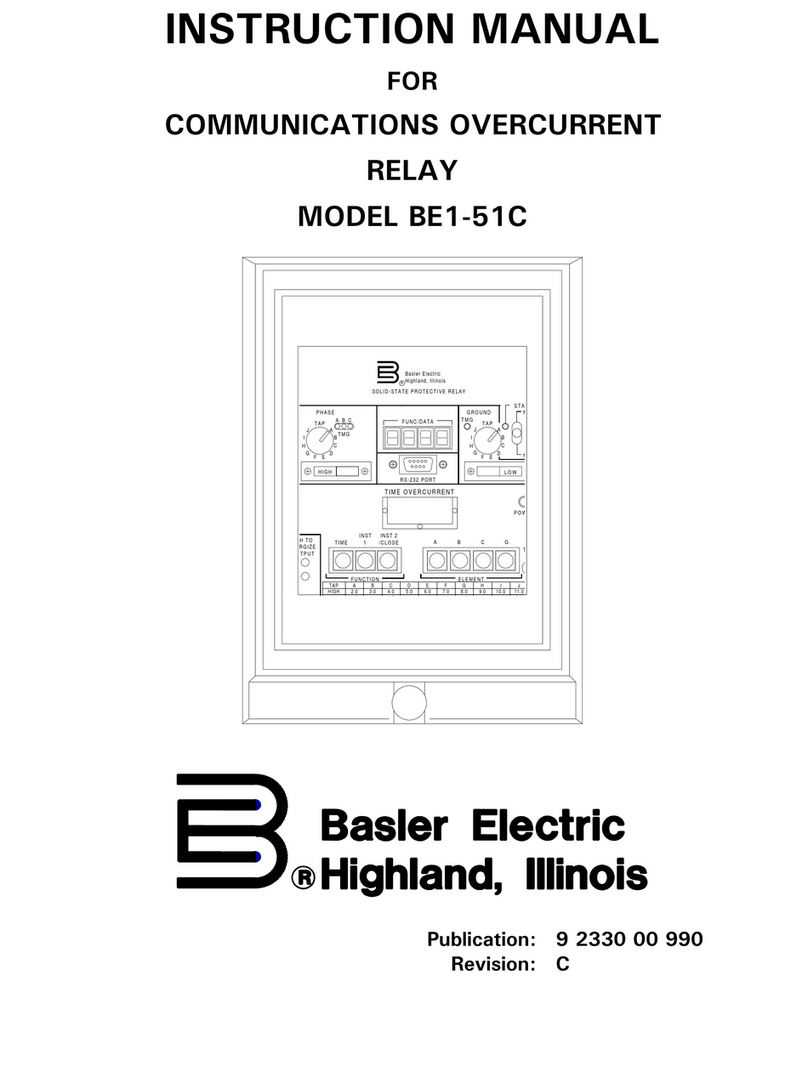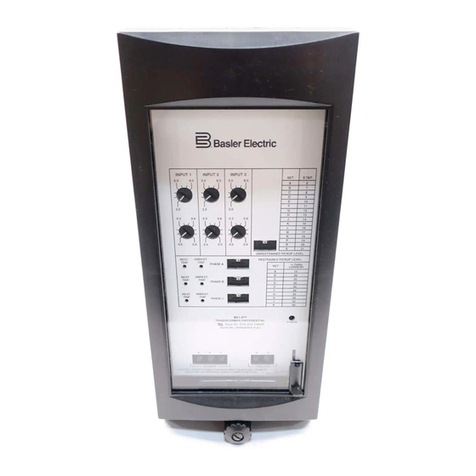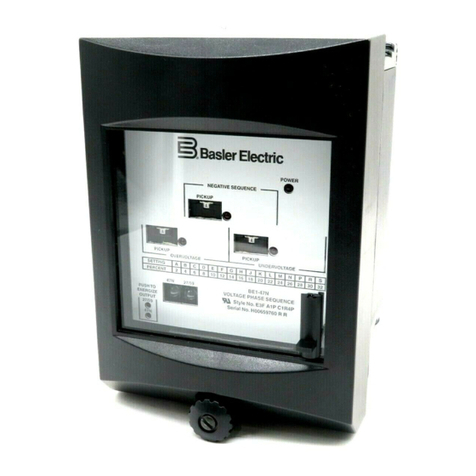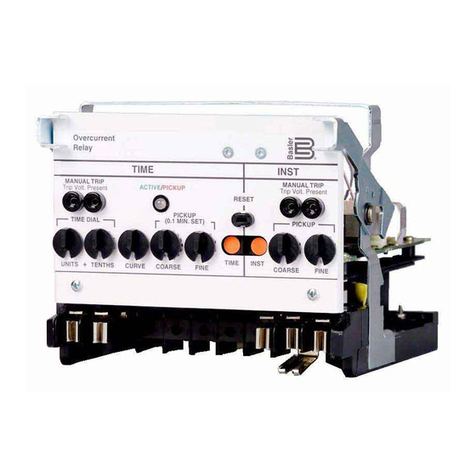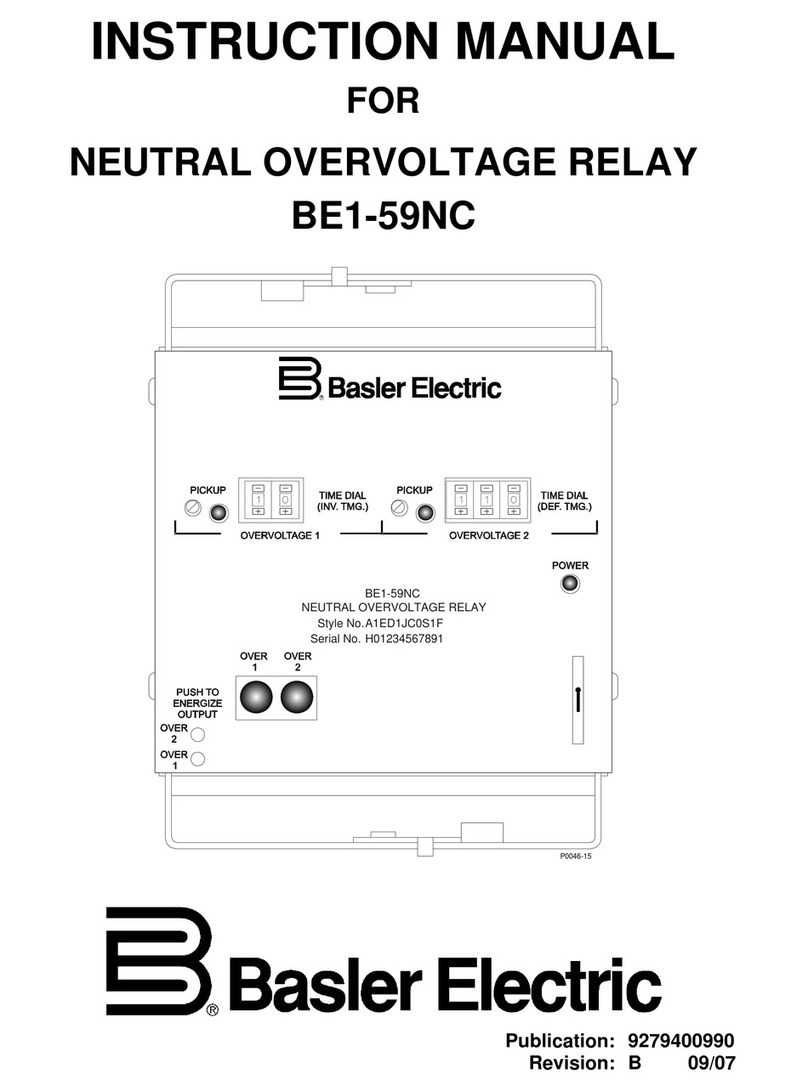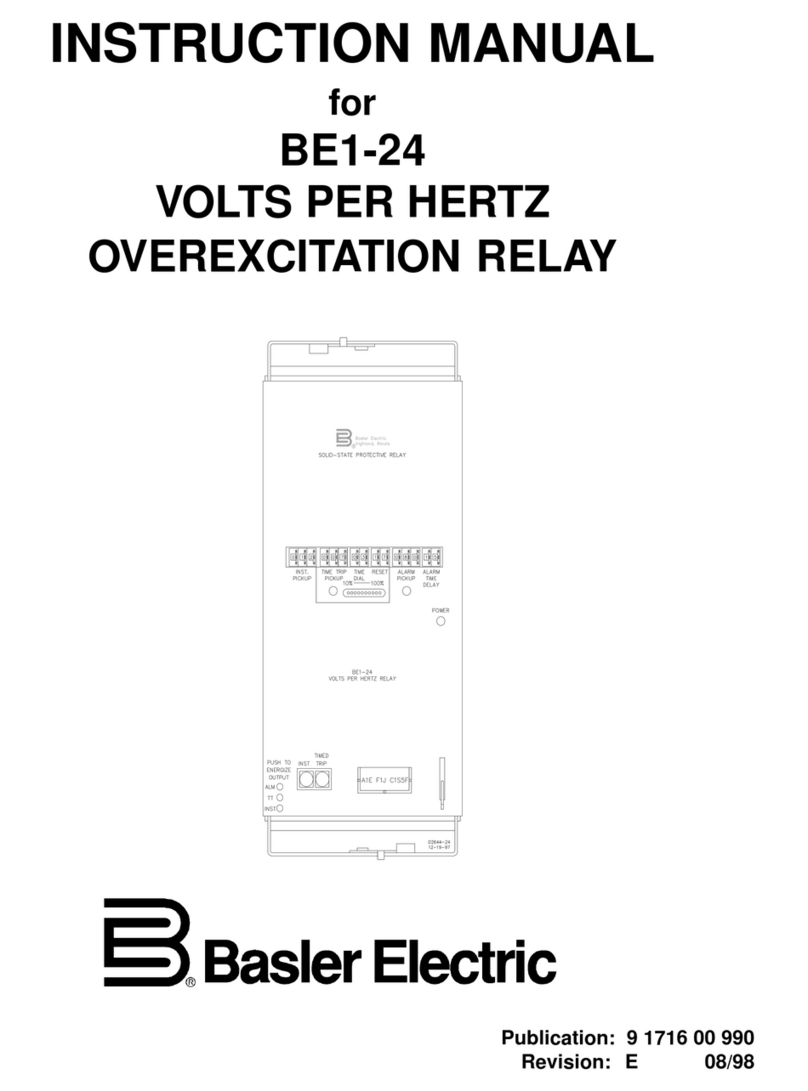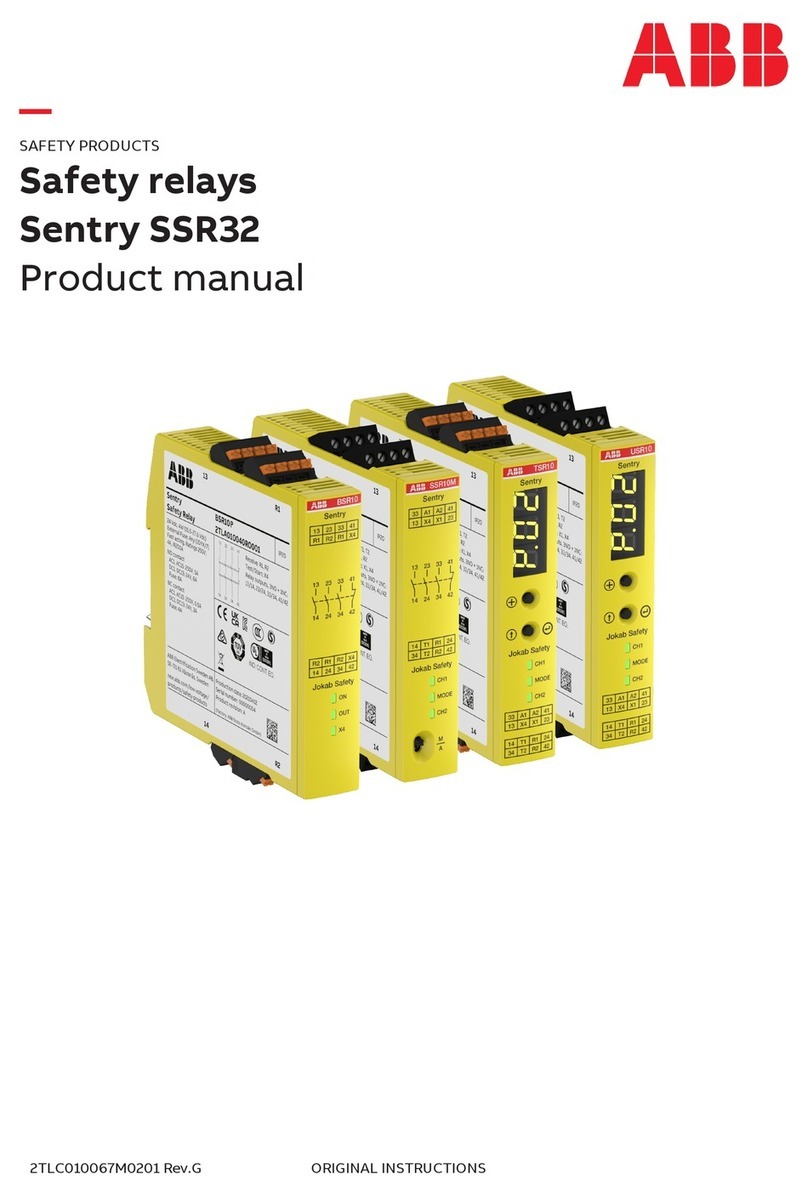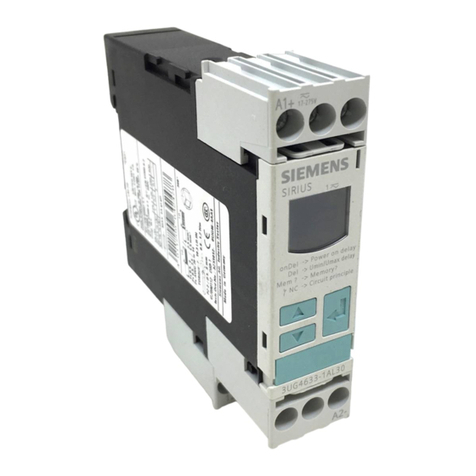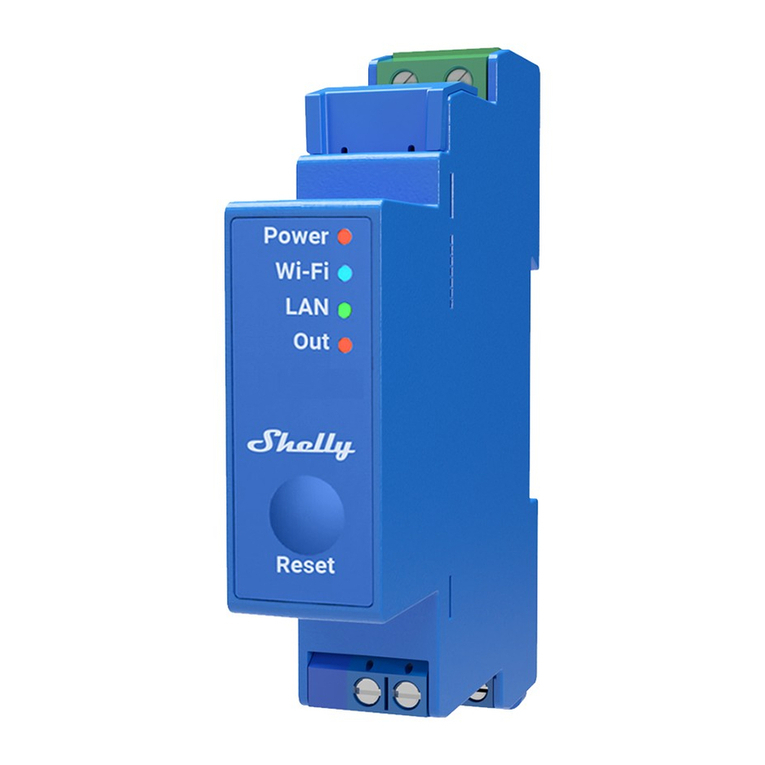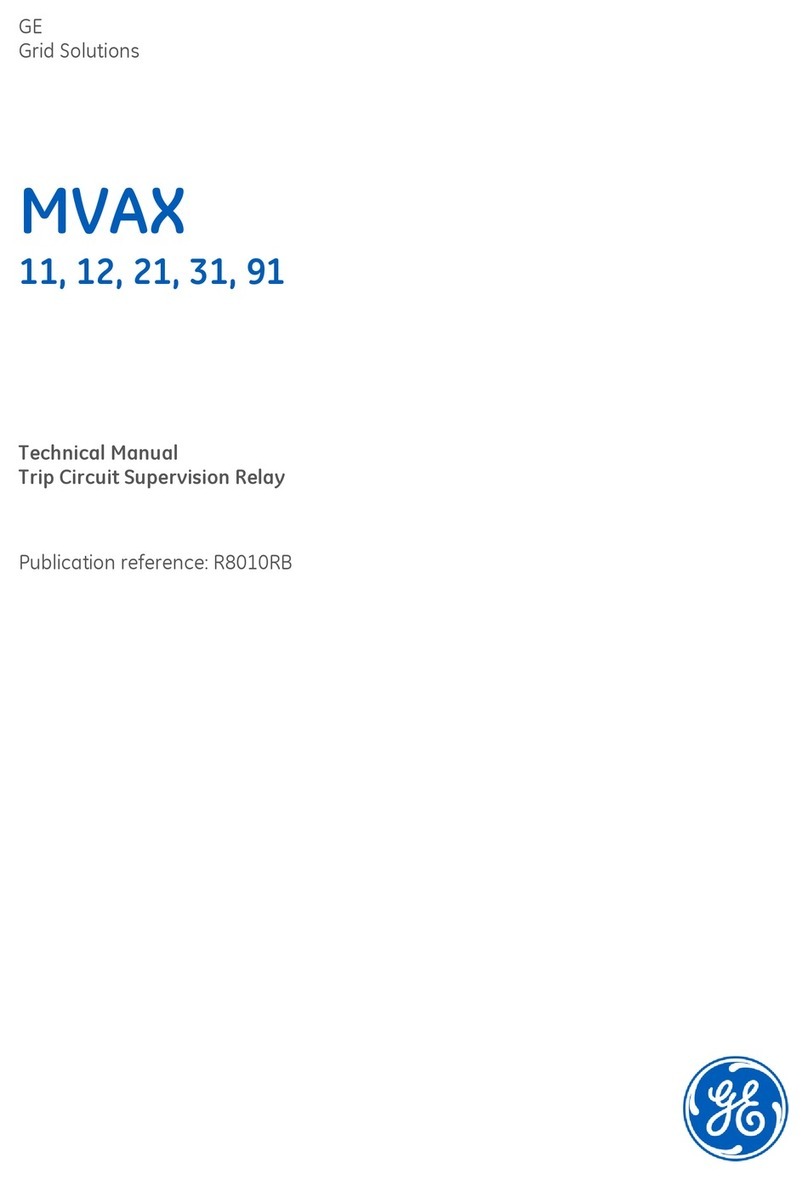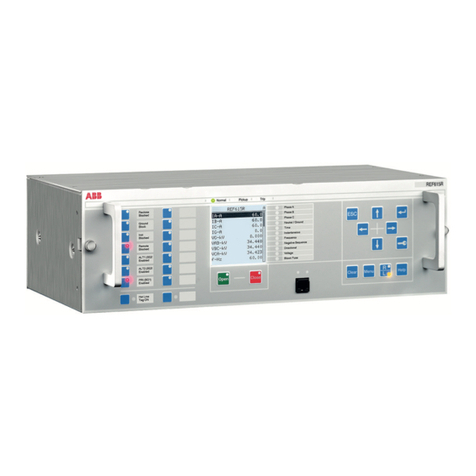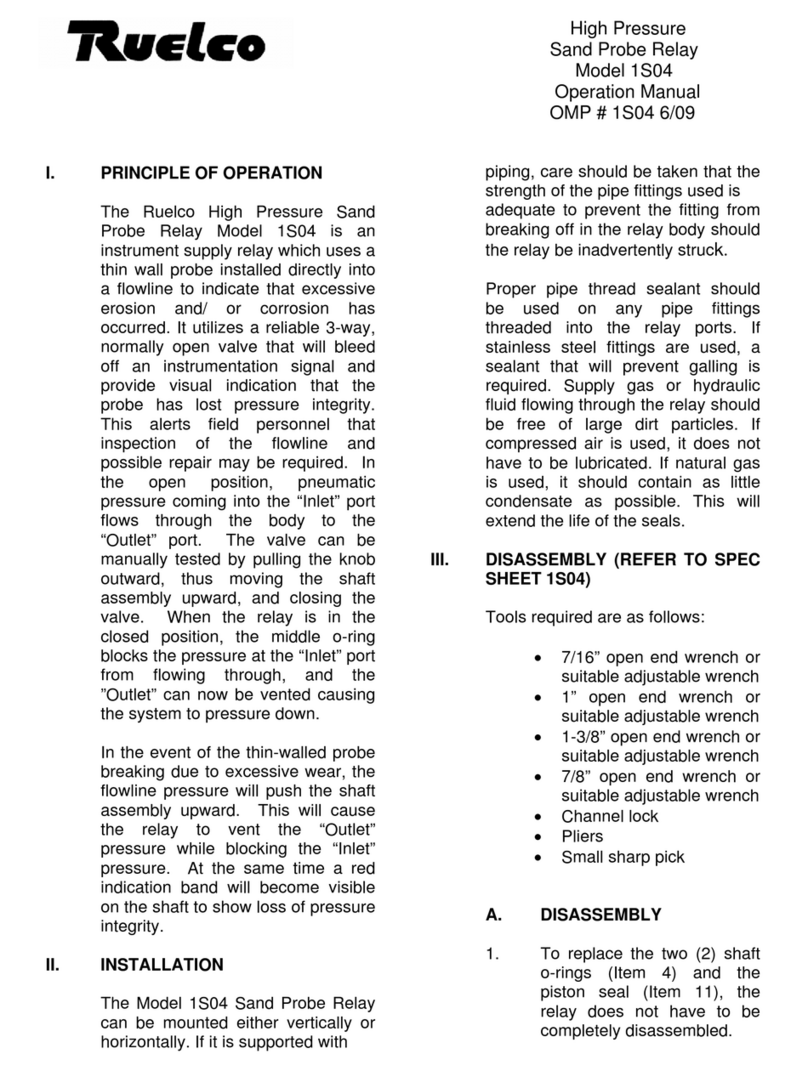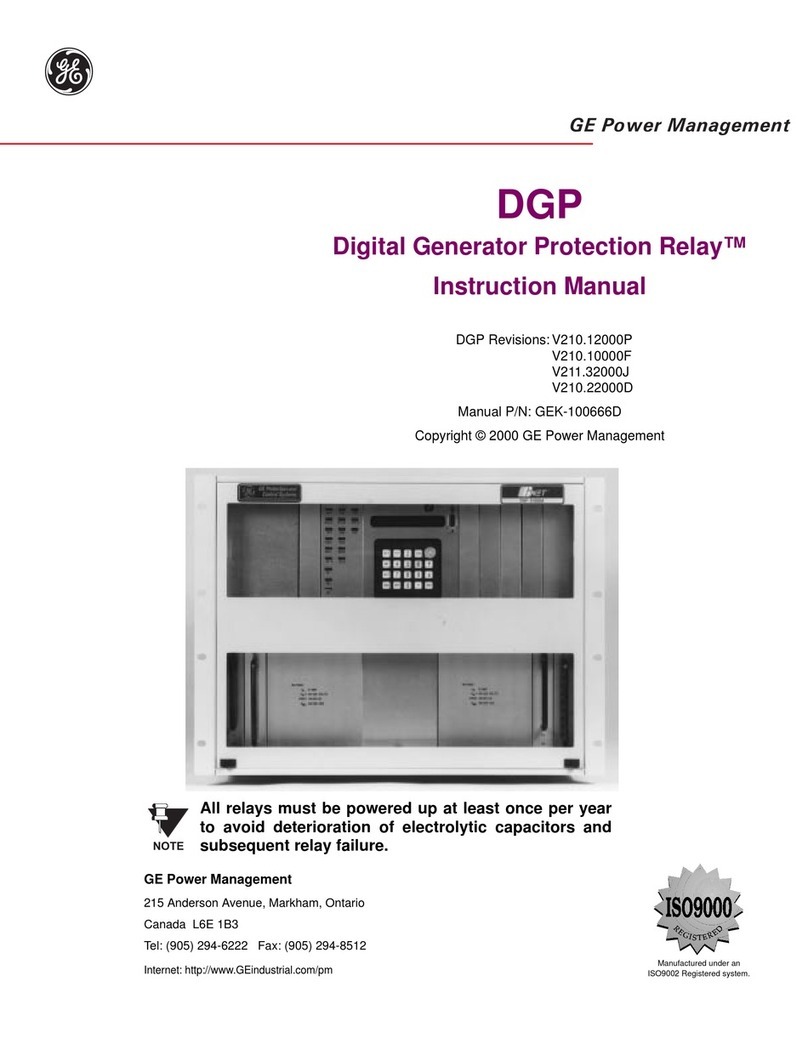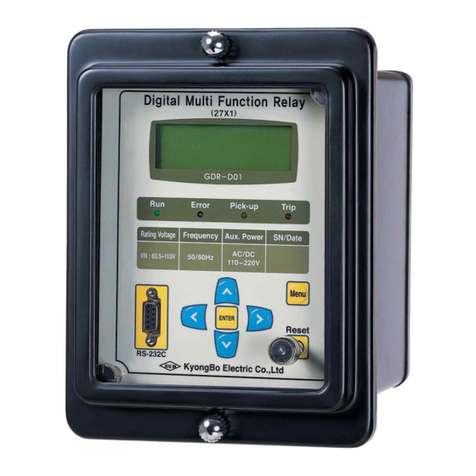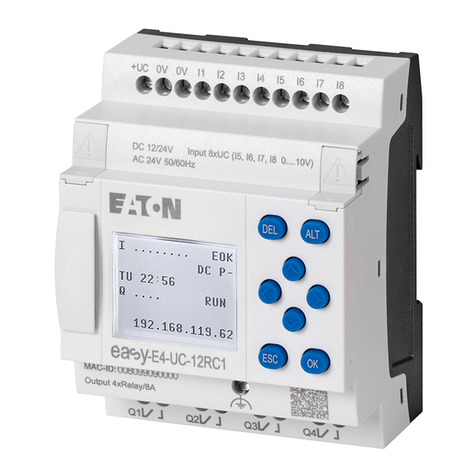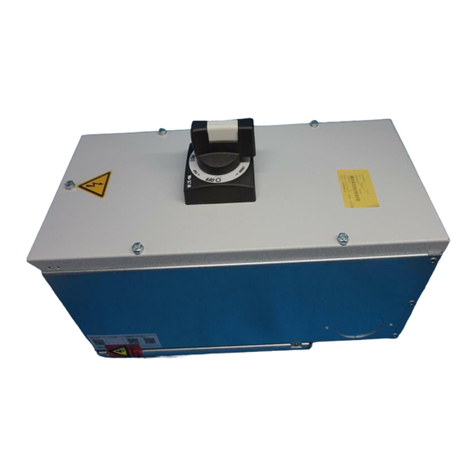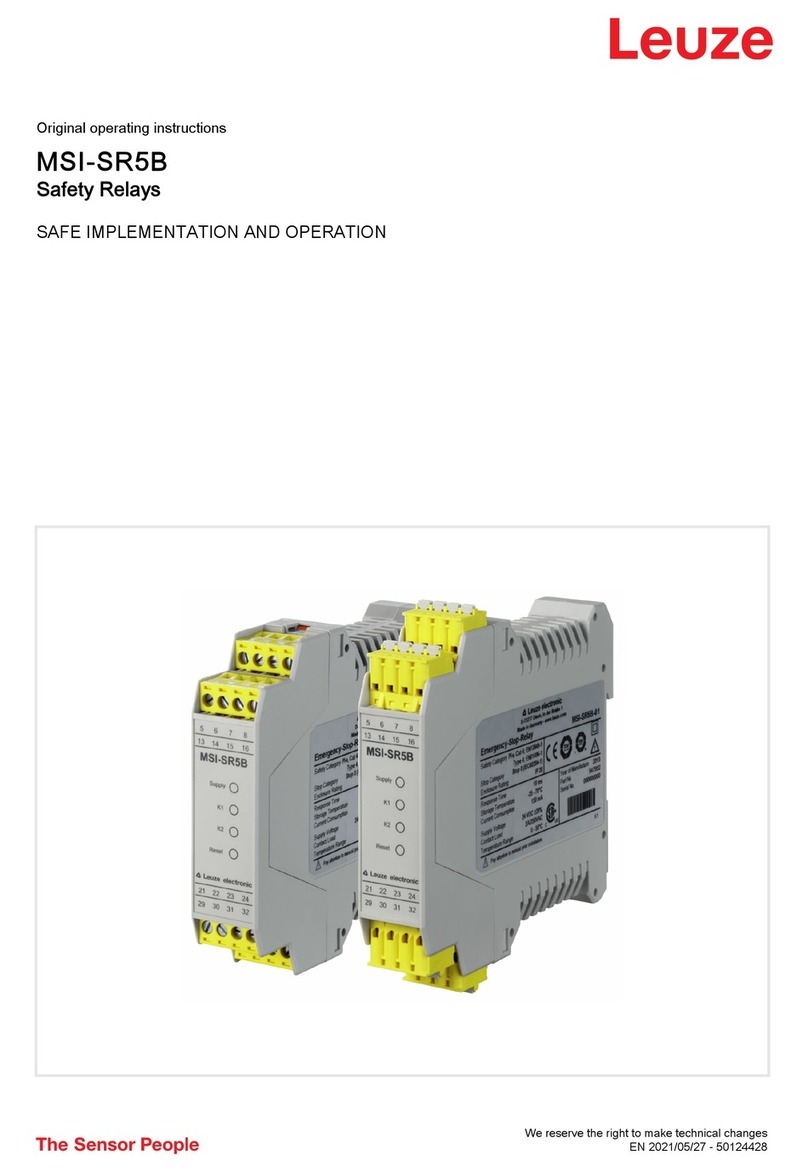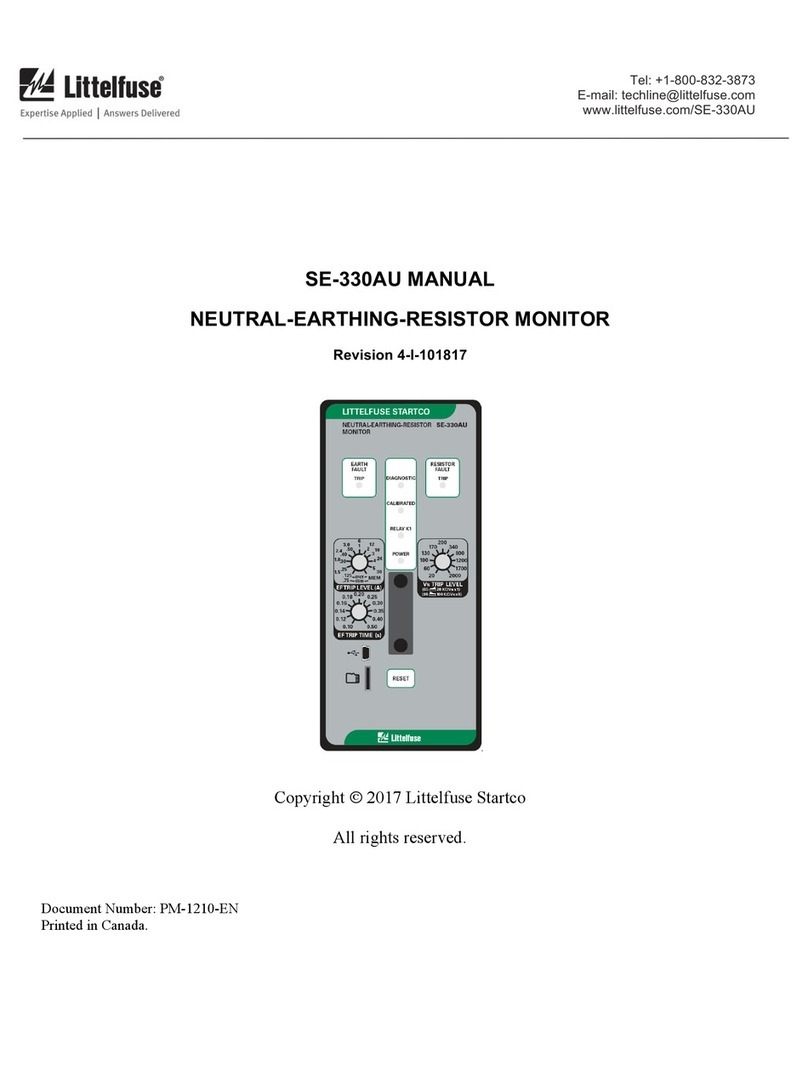
BE1-951
2
FEATURES
PROTECTION
• Phase, Neutral, and Negative Sequence Instantaneous
Overcurrent elements with settable time delay: 50TP,
150TP, 50TN, 150TN, 50TQ, 150TQ
• Phase, Neutral, and Negative Sequence Time
Overcurrent elements: 51P, 51N, 151N, 51Q
(51P elements can have voltage restraint)
• Each overcurrent element can be set for forward,
reverse, or nondirectional control (67P, 67N, 67Q).
Directional control is by Positive (671), Negative (672),
Zero Sequence Voltage (670V) and Zero Sequence
Current (670I) polarized directional units.
• All U.S. and IEC timing curves plus user program-
mable curve
• Minimizes transient overreach and overtravel on
overcurrent elements
• Optional separate ground current input provides zero
sequence current polarization and/or ground
overcurrent protection for a separate ground CT.
• Phase Undervoltage and Overvoltage elements:
27P, 59P. Elements use a 1 of 3, 2 of 3, or 3 of 3 logic,
and monitor either line-line or line-ground voltages.
• Auxiliary Undervoltage and Overvoltage elements:
27X, 59X, 159X. Elements monitor either fundamental or
third harmonic on the optional auxiliary 4th VT input, or
fundamental phase residual, 3V0, of the phase inputs.
• Overexcitation, volts per Hertz element: 24
• Forward or Reverse Power: 32
• Negative Sequence Overvoltage element: 47
• Over/Under Frequency elements: 81, 181, 281, 381,
481, 581
• Each 81 element can be assigned to monitor 3 phase VT
input (VP) or Auxiliary voltage input (Vx).
• Breaker Failure protection function: BF
• Two general purpose logic timers: 62, 162
• Programmable Logic using BESTlogic
• Four protection setting groups with external or automatic
(cold load pickup, load, unbalance, recloser shot)
selection modes
• Sync check with dead line/dead bus voltage monitor
logic, 25, 25VM (Requires optional 4th VT sensing
circuit)
• Fuse loss detection protects against false trip due to loss
of voltage sensing: 60FL
CONTROL
• Four shot recloser with zone sequence coordination and
sequence controlled protective element blocking
functions
• Virtual breaker control switch—controllable from both
HMI and com. ports: 101
• Four virtual selector switches—controllable from both
HMI and com. ports: 43, 143, 243, 343
• Virtual lockout latches: 86, 186. Status is stored in
EEPROM.
• Communication port control of 101 and #43 switches
allows for SCADA control of relay and breaker
INSTRUMENTATION
• Real time A, B, C phase current, voltage, and frequency
and derived neutral and negative sequence current and
voltage
• Real Time per phase and 3 phase Watts, Vars, and
3 phase Power Factor
REPORTS
• Current demands for phase, neutral, and negative
sequence currents, and forward and reverse watts and
vars—magnitudes and time stamps are recorded for
today's peak, yesterday's peak, and peak since reset
• Optional 4000 point log of demand readings
• kWh and kvarh, forward and reverse
• Breaker operations counter and contact interruption duty
FAULT RECORDING
• 255 event sequence of events report with I/O and alarm
sub-reports
• Fault Reporting; 1 or 2 oscillography records per fault
report
• 16 fault summary reports; two most recent Fault
Summary Records saved to non-volatile memory
• Total number of oscillography records settable from 6 to
16
• Total of 240 cycles oscillography memory @ 12
samples/cycle
• COMTRADE format
• Load compensated distance to fault
COMMUNICATION PORTS
• Three independent general purpose communication
ports
- Front RS-232 ASCII communications
- Rear RS-232 ASCII communications
- Rear RS-485 ASCII, Modbus, DNP 3.0, and TNP
protocols
• IRIG time sync (unmodulated)
SELF TEST AND ALARM FUNCTIONS
• Relay fail, major alarm, and minor alarm LEDs, and
fail-safe alarm output contact (closed or open)
See style chart, page 12, for ordering information
• Extensive internal diagnostics monitor all internal
functions of the relay
• More than 20 additional alarm points—programmable
for major or minor priority
Including:
- Phase current, and forward and reverse watt and
var demand alarm
- Neutral and negative sequence unbalance demand
alarms
- Three breaker alarm points programmable for slow trip,
interruption duty threshold, or operations counter
- Trip circuit voltage and continuity monitor
- Close circuit monitor via BESTlogic
PROGRAMMABLE I/O
• Four programmable inputs
• Five programmable outputs and one dedicated
programmable alarm output
Courtesy of NationalSwitchgear.com
